They say that “what doesn’t get measured, doesn’t get managed.”
The opposite may be true as well.
As a financially-conscious person, I was able to understand the positive feedback benefits of tracking things such as how much I spend over a period of time.
I have been budgeting my money since I started work eighteen years ago. A byproduct of budgeting is that you would need to track your expenses. I cannot deny that when I track my expenses, I became conscious of various aspects of my spending that would eventually influence my future spending.
This is something that many are not comfortable with because deep down, they have this fear of big changes to their lifestyle if their spending tracking tells them some deeper problems. Many also do not have the confidence to go through with tracking because they find it very OCD or that they were unsuccessful in their past efforts to track their expenses.
If you are reading this blog, doing some of this money stuff might feel very comfortable to you. But there will always be something that you struggle with.
Getting better in the wellness department may be one.
While there is a strong correlation between good money management and fitness, I saw some who chided others for their poor money habits but failed to see that they are struggling to rid themselves of some undesirable eating habits.
A month ago, a few of us at Providend confronted something we are least comfortable with together.
Embarking on a Two-Week Conscious Eating Awareness Program
Our company’s health and wellness fitness ambassadors (yes we have a pair of angels tasked with making sure we are tip-top in the health department as well as we slaved for the company) decided to ask us to participate in a 14-day health program.
The program is the brainchild of Dr Chong Yeh Woei, a senior consultant physician in the Royal Healthcare Specialists Centre. You might have seen his articles in the Straits Times here and there. Dr Chong and his partner Wong Kien Haw created the CuraMaker program.
Both of them fall under the health philosophy that the control of our blood glucose would allow us to live healthier lives, so much so that they designed this program.
Your doctor would often say that while general health advice is useful, each of us is unique in that what works for the general human beings might not work for you. The Curamaker program is a 14-day program designed to provide personalised insights, on the cause and effect of the foods we consume.
- First 5 days – We eat like we usually eat, record our food intake and fitness activities
- Next 5 days – At the end of day 5, we will find out which are the top 5 foods that are not so good for us, together with a snapshot report on the status of our glucose variance, so that we can make informed decision to either eliminate this food from our daily diet or consume them in a conservative manner. Starting from day 6 for five days, we are encouraged to make adjustments to our food consumption so that we can improve our health
- Last 4 days – The CuraMaker’s MAP will analyze our blood glucose variance and review our health status.
The goal at the end of this program is:
- We should know what are the food, or food schemes that would spike our blood glucose out of an acceptable range and what will not
- If we control our blood glucose within the range, it should give us more energy, and stay in shape. For the athlete, they are able to biohack to get good performance
- For those who are on diabetes medication, they would know #1 and be able to embark on a natural, discipline regime to not be on medication
I was quite aware of the dangers that sugar poses to our overall health and I have written about how you can optimize your hunger monster, and feel full so that you can reduce your food expenses ( you can read about the article here).
I was quite intrigued by the prospect of doing this 14-day program. However, I do have some reservations due to my personal health situation. I am not the only one having this concern. Speaking to other colleagues, different people have different reservations about it.
But almost all of us decided to go through with this program.
How does the Glucose Variance Monitoring Work?
Here is the short version:
- There is a sensor attached to our body for 14-days
- We will have to install two mobile applications that monitor our health status. The first one is LibreLink FreeStyle from Abbott and the second one is the CuraMaker app. (You can look up these two apps on the Apple and Android App Stores)
- On a periodic basis (when we wake up, before every meal, before we sleep), we will move our NFC-enabled phone over the sensor in #1 so that the data can be read from the sensor to the phone to the app to get the glucose reading
- The LibreLink FreeStyle app is an application that consolidates our blood glucose level at any point
- The CuraMaker app is a self-developed application that allows us to record what we eat, our weight, and calorie intake, and marry the data read from #4 to give us a comprehensive report.

This is a picture of some of my colleagues with the sensor.
The sensor last for 14-days. After 14-days, the app will show that the sensor is not working and ask you to buy another one. If you are interested, you can buy the LibreLink Freestyle sensor yourself here. Currently, it cost like SG$92 but if you are getting your first one, there is a 35% discount. (Do note that we signed up for this program with CuraMaker so the actual cost is more than this as the CuraMaker is a value-add service that has a higher value on top of the sensor. This is like you coming to Providend for advice. It is going to cost you more for something that you may not want to do yourself or cannot do yourself.)
Dr Chong’s team came down and install the sensor on us, but if you are getting it yourself, you can install it on your own body.
Got Needles or Not? Is it Painful?
This is the $10,000 question that everyone would like to know. The lady tells us that there is no needle but there is a filament.
Your next question is: What is the difference between needles and filament?
I dunno man, but the most important thing is a long metal thingy gets forcefully pressure pumped into your body to measure your blood glucose level. We don’t care what is the name of that metal thing, we only know something is inserted haha!
My colleague Tee Jin, an associate adviser at our firm (third from the left) was the first one to go and after it was applied, we saw blood dripping out.
By now, I wonder how many of you are still interested in reading finish this article =)
To be fair, Tee Jin is the only one we see with such an experience. The rest of us have a pretty uneventful sensor installation experience. Once you install the sensor, it does not hurt.
You will have that ant-bite feeling when you move your arm around. But after 1 day it is ok.
Where to Install the Sensor?
I think it is best you install a body part that you won’t accidentally knock into, can easily scan (you need to periodically scan it with your phone), and not have too much muscle.
Most install at the back of the arm (refer to the image).
Will the Sensor fall off?
The sensor has strong suction to your skin. But if you knock it enough, it will lose its grip and will slowly fall off.
Mine completely fell out after 1 day but my case is rather special. Long time readers would know that my body is highly covered with lesions due to Psoriasis and just happen that the lady installed at an area that has half lesions, half-clear skin.
So the part installed with lesions eventually could not hold together.
You should not have this problem (since not a lot of people have this issue).
Luckily, I was able to go to their office to install it a second time for free (well it’s costed under the program).
The second time, I had a bloody hard time finding a spot that does not have a lesion, won’t get knocked into and is too inconvenient, can scan, and doesn’t have too much muscle.
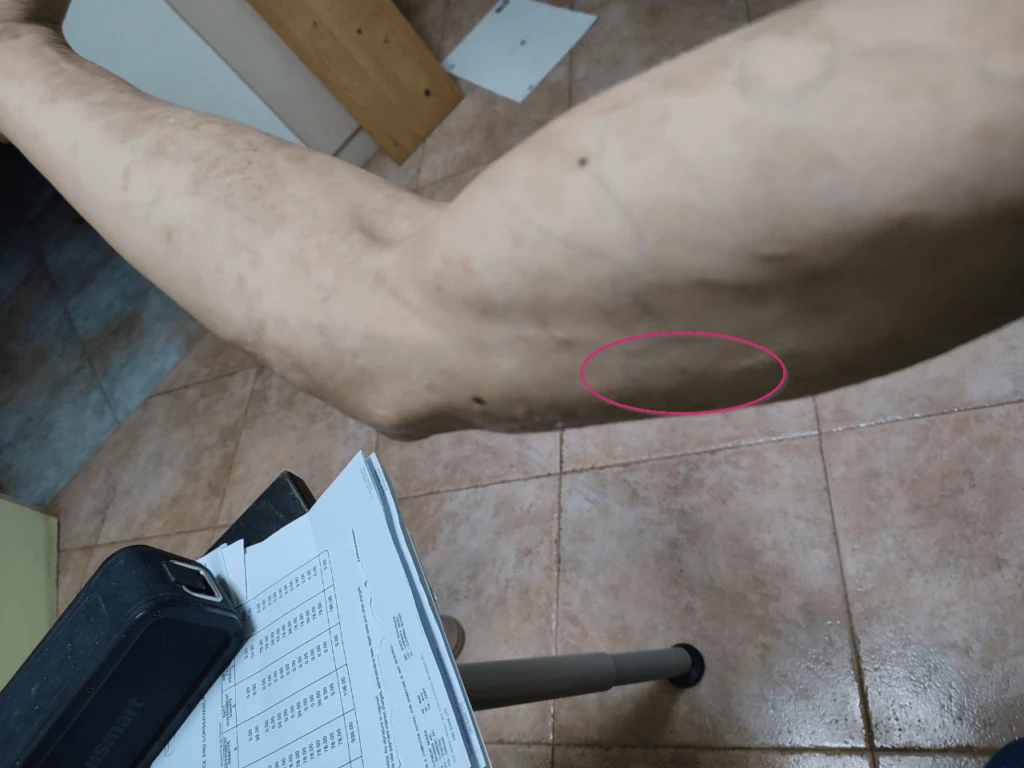
I decided to install it in this area on my right arm. I must say that it was a good choice as you won’t easily bump into it when you sleep (you got to be careful as well), can scan easily, can still take off and put on clothes rather easily, and it is just below my biceps.
Your Phone Needs to be NFC-Enabled
This is mainly a requirement to read the readings. My phone did not have NFC enabled and I had to go get a new phone to participate in this.
I do know that there are NFC specific devices that you can purchase just to read the readings manually if you do not have an NFC enabled phone.
The LibreLink App
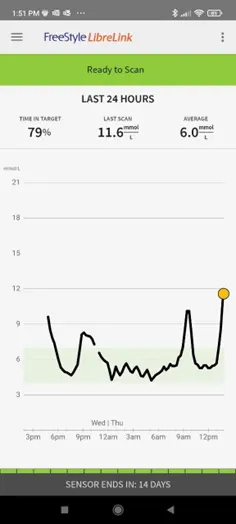
Here is the main graph on the LibreLink App. It can show you the blood glucose reading from your sensor if you periodically retrieve the info from the sensor.
You would notice that there is a green area. That is the range where your blood glucose is at an optimal range (which is between 4 to 7 mmol/L). For diabetics, your range would be different.
The name of the game is to eat food that does not spike your blood glucose out of range [keep within 4 to 7].
So in this chart, you can see a lot of negative demonstrations!
This life game is quite similar to an Iron Condor options strategy:
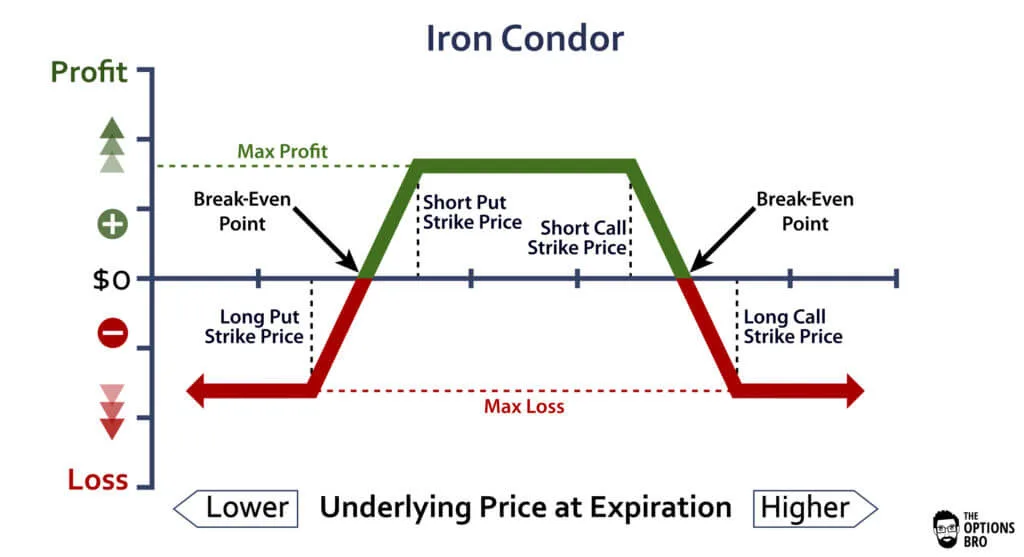
In an Iron Condor strategy, you want both sides of a call and put options spread to expire out-of-the-money. If that happens you earn the net premiums collected upfront.
If you expire in the money on either side, you lose your entire capital deployed in the trade.
In the case of this health life game, it is not so dramatic as you can live to play for another cycle.
The CuraMaker App & Team
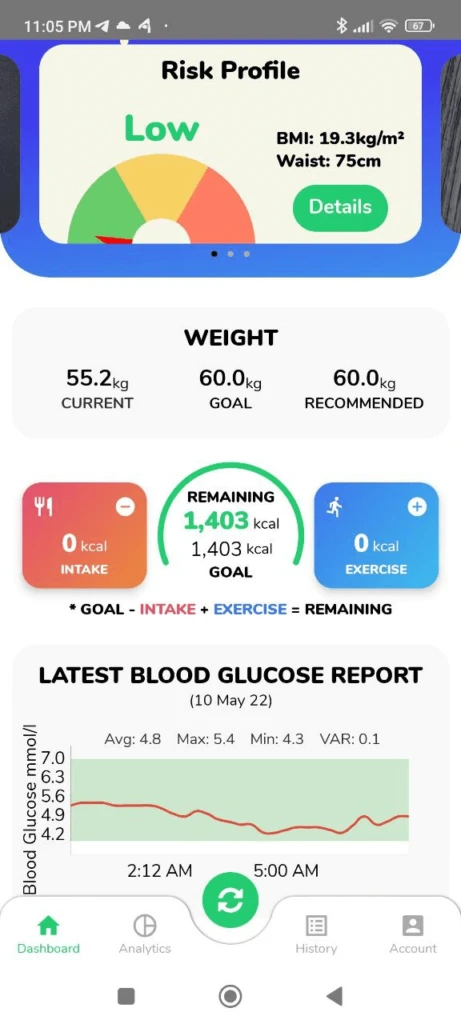
This is the view from the CuraMaker app. We key in or take photos of what we eat throughout the day so that the CuraMaker app and human team can advise us on what to eat to keep our blood sugar in the range.
This is the part where we need to get used.
We have to take photos or record our food EVERY TIME WE EAT SOMETHING.
If you do not like to track your expenses, imagine forcing yourself to do this. The interesting thing is… eventually, every one of us was able to do this relatively well.
Making the recording process easier and having a smartphone makes it more livable and when there is less friction, it becomes easier to adopt.
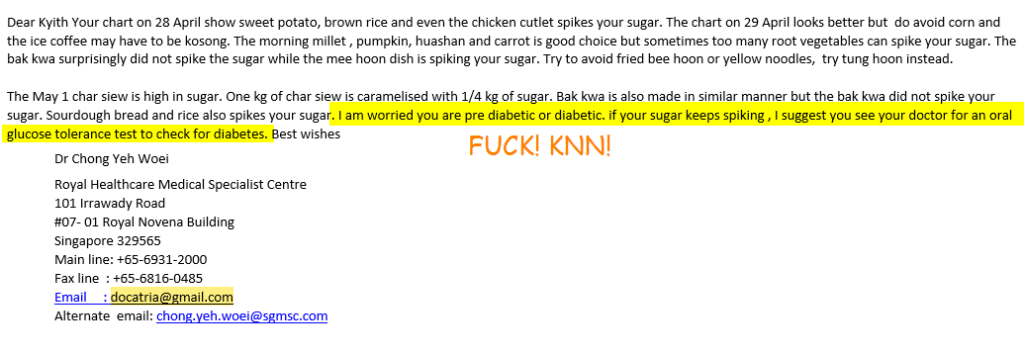
On a periodic basis, Dr Chong and the team will send their analysis based on the food we recorded. On this screenshot, you can see his reply to me.
Not very promising.
Basically, it is like a Chartered Technical Analysis deducing the probability of a breakdown in the S&P 500 after years of studying various chart formations.
What Food Will Spike and Not Spike our Blood Glucose?
Our bodies are different and our reaction to carbs and sugar is very different. Three of my colleagues ate the rather reputed Maxwell food centre Hainanese Western Food and two are ok, one of them did not react so well (me too).
A few of my colleagues deduced that Shake Shack was rather mild on the blood sugar but one of them had a bad reaction to it.
This shows the importance of this glucose monitoring because we don’t know how sensitive we are to what kind of food. We took these two weeks to test out our reactions to the food around us.
I have gotta say, for someone pretty conscious about this stuff before this program, I was quick shock by my reactions. They are not good at all.
It is quite fortunate that most of my colleagues show relatively little signs of insulin resistance.
I am gonna show you some of what I tried and give my own commentary, in the hopes that you have some idea what is the stuff that spikes the glucose (and to what extent).
Char Siew & Roast Pork Rice Vs High Initial Income Rate in Retirement
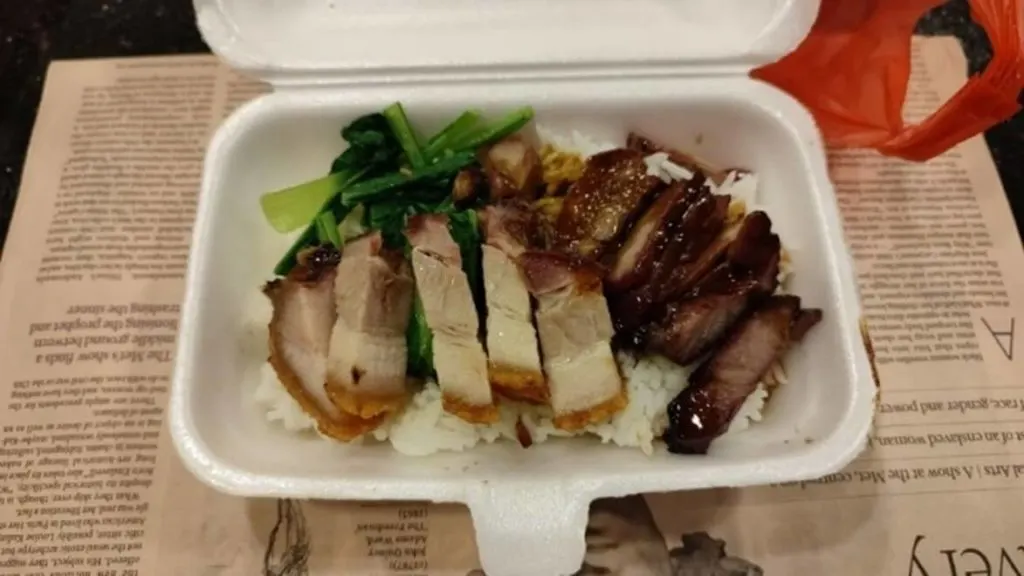
This is the first thing that I ate after having the sensor.
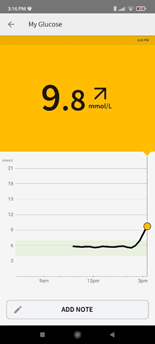
And things were off to a very bad start. It spikes to nearly 10. I deliberately ask the auntie not to put the gravy but she managed to put one type of gravy. Now I don’t know whether it is the rice, or the gravy or the sugar in the char siew.
This is the issue a lot of the time. You just don’t know what causes it, unless you cook and understand what goes into the dish.
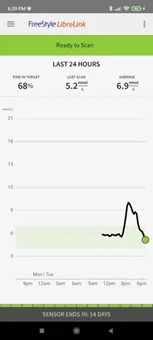
Why does the degree of spike matter? When your blood sugar spikes, insulin is released from your pancreas to force those excess sugar that is not used into storage (yes, it will store those sugar around your body as excess fats).
The higher it spikes, the LONGER it takes to get back to the optimum range. In this chart, it takes like 2.5 hours before it returns to the optimal range!
If the peak is closer to the optimal range, it just takes a little insulin to bring things back to normal. Too many of these high spikes may eventually make this insulin release mechanism faulty.
This phenomenon is pretty similar to the volatility drag and high spending rate retirement problem:
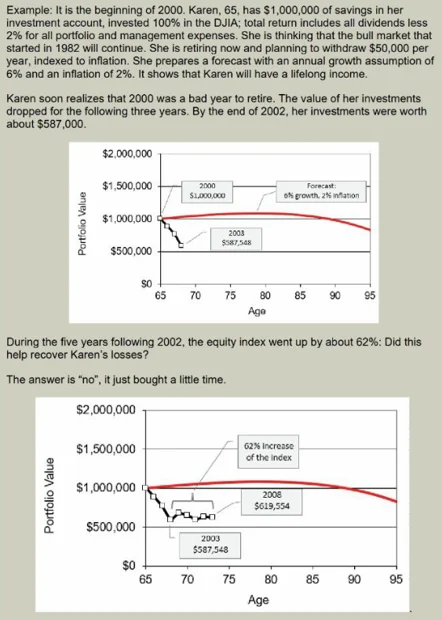
Many would think that if the portfolio has a high return, you can extract a high initial income from the portfolio. The truth is too high of an income extracted in a poor market sequence, on a portfolio that is more volatile would result in a big impairment to your retirement portfolio. Your portfolio would just languish at the current value, despite a huge recovery.
This is similar to the high glucose spike, it takes a long time for your glucose to return to a normal level (in the case of the retirement portfolio it is worse because it might never get back to the original state).
Homecook Mixed Vegetables with Brown Rice
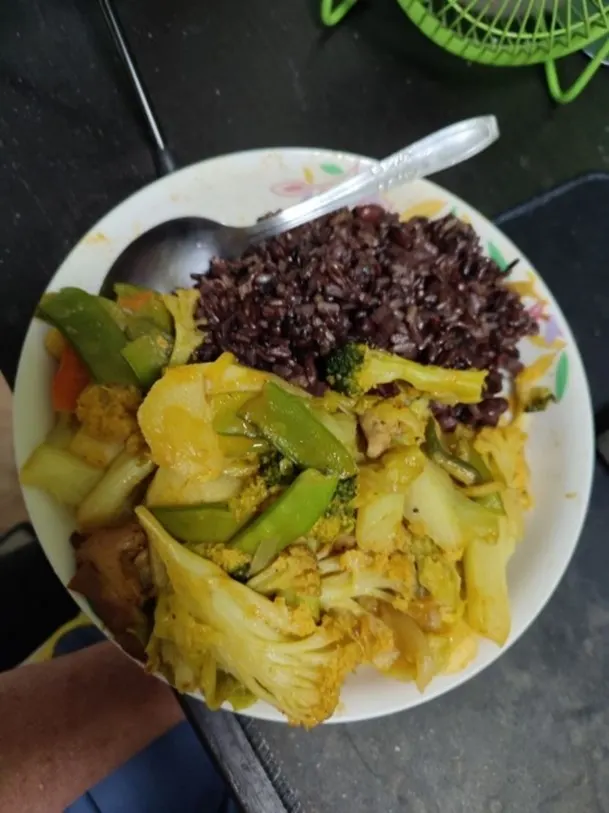
This is a recurring dinner for me. A small portion of healthy brown rice and vegetables and meat with light seasoning.
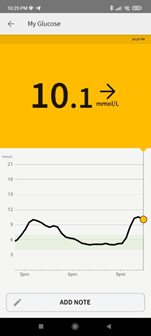
Spike.
One of the conclusions that we came to was that white rice is not good, and brown rice is also not too good.
The rice that is better for your blood glucose is basmati rice in enough quantity.
Maxwell Food Centre Hainanese Chicken Cutlet
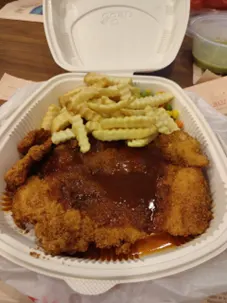

Not sure if it’s the sauce, whether it is the floor of the cutlet or the french fries. Either way, this spike to 11.6.
Mixed Steam Vegetables and Chicken Breast for Breakfast
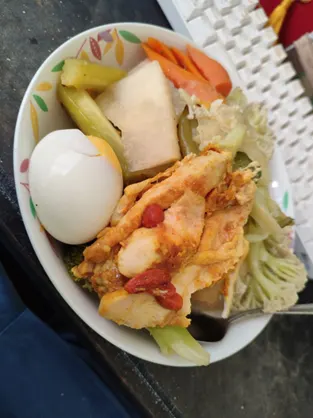
This is my staple breakfast where we steam a mixture of vegetables, no seasoning, chicken breast and egg. I used to have sweet potato but I remove it (sweet potato confirm will spike)
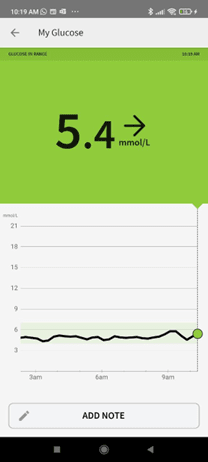
Good to know this is ok.
Salad with Chicken Thigh
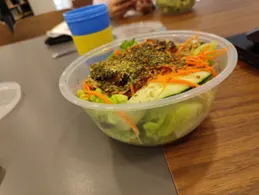
We have a few salad places close by and this became one of the favourites. This is beans, cucumber, chicken, basil, pasta, and oregano with roasted sesame oil as the dressing.

Quite ok.
Ice Coffee Siew Dai
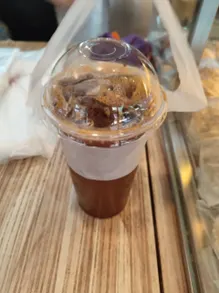
The rather popular Tanjong Pagar market Bakery Coffee. I realize we cannot completely remove sugar from coffee since condensed milk has some sugar. A milder one will be to order Kopi See Siew Dai.
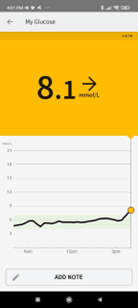
It went out of range to 8.1.
Home Made Millet Porridge
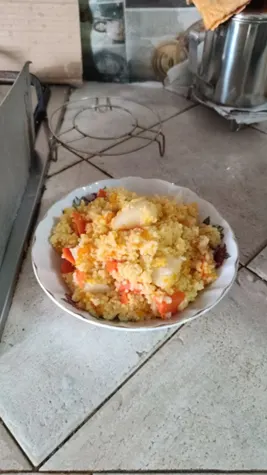
My dad saw this recipe on YouTube which is supposed to be beneficial to diabetics. It consists of millet, Huai Shan, carrot and pumpkin.
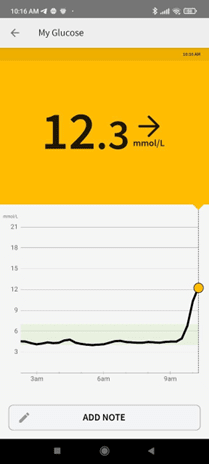
The diabetic-friendly porridge gave one of my highest spikes if not the highest during the test.
Homecooked Mee/Bee Hoon
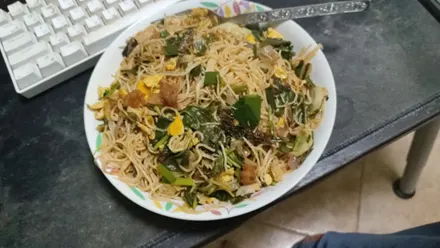
This big plate of dunno mee or bee hoon spiked the sugar level to 9.8.
Chee Cheong Fun with Sesame Oil
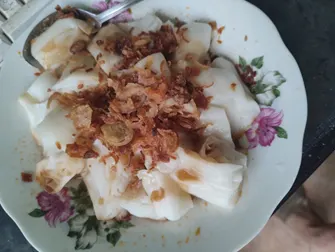
This one spikes the blood sugar to 9 and refuses to come down for a long while.
Frozen Char Siew Bao

Decided to test two times char siew bao.
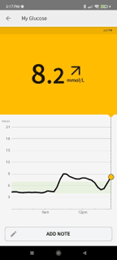
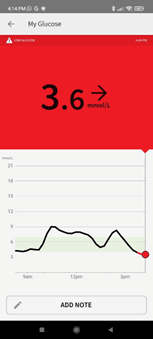
The interesting thing is that these two spike up slightly to 8.2 then it took a while to bring it down but it overshot to the downside.
It is as if the body did not realize that it reached an optimal level and released more to further suppress the level such that it went negative. This is not good.
Chicken Feet and Pork Bone Soup with Brown Rice

In theory, this soup dish should be rather tame. But with brown rice, it spikes up to a maximum of 8.8.
Rye Sourdough Bread
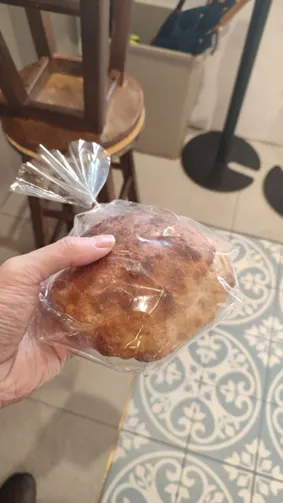
I went out one Saturday after getting bored at work to hunt for Sourdough bread to test my body’s reaction to it. Found this rye sourdough bread and decide to eat half.
Spike to 8.9.
Pringles Potato Chips
I decided to see the reaction to Pringles.
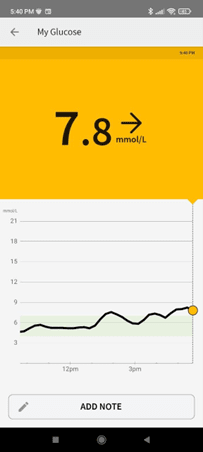
The chips definitely spike my blood sugar to the region of 8.
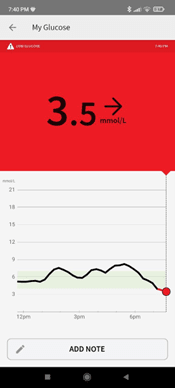
But what I realize is that it also messes up my insulin system such that it was not able to detect the ideal optimal level, so much so that I went into low blood sugar mode. This always seems to be the case for chips.
Shake Shack Chicken Shack
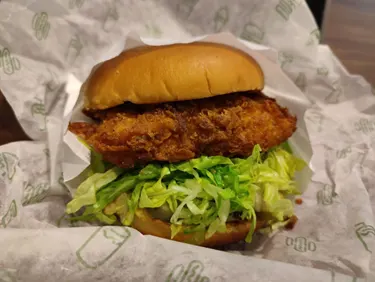


We work close to a Shake Shack so we got to try to see how it goes. Actually, Shake Shack burgers are pretty gentle on the sugar, but it somehow takes a long time for the levels to come down!
Shake Shack burger is definitely better than the nearby Burger Buddies burger at Essen@Pinnacle (A not bad place to bring your friends with a good variety of food).
Chicken Katsudon and Starbucks Frappuccino
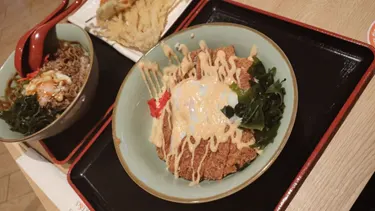
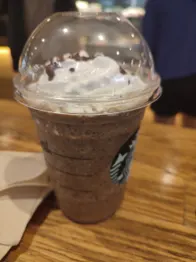
Went out and meet my friend Samuel and since he reads Investment Moats, now he will know how this crazy meal spike my blood sugar.
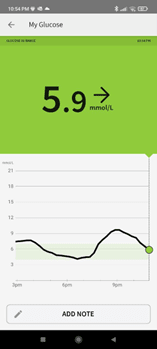
You can observe that the sugar peaks at somewhere between 9 and 10 then it comes down at 10 to 11 pm. Definitely take a while but strangely not as bad as the Shake Shack.
Cai Png without Rice
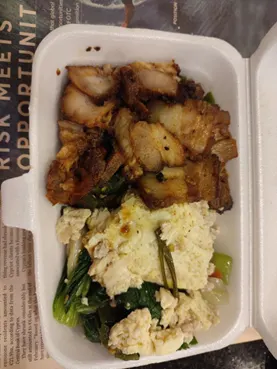
This was one of my experiments with no rice Cai Png. This means should be rather bad because that is the char siew (For those working in Tanjong Pagar area the Cai Png at the second floor of Blk 1 Tanjong Pagar Plaza, next to Meet Paul Western Food is pretty good and affordable!)
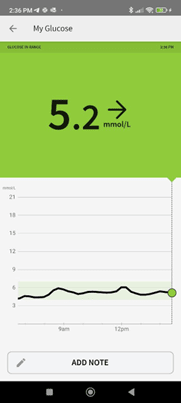
Turns out if you do not include rice it is quite ok.
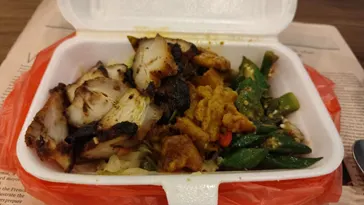
Just to be sure, I decided to try the same char siew with some other meat on another day without rice.
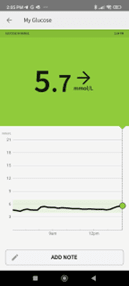
Looks ok again.
French Fries from Meet Paul
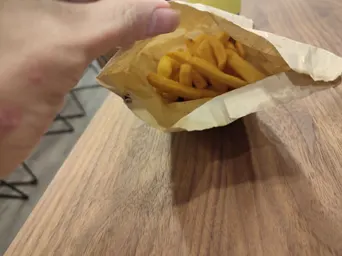
Meet Paul is this hidden awesomeness near Tanjong Pagar Plaza. My colleague Ray passed me his fries because he wanna be healthy, so I get to do this independent test.
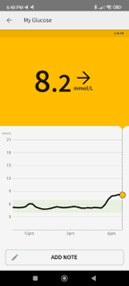
The fries alone resulted in this spike.
Chicken Chop (without the sauce) at Meet Paul

I decided to try the chicken chop when my blood sugar went to 3.9 (at the lower bound). Decided to eat the beans, corn, coleslaw and fries. This meal cost me $6 which is damn rare in this part of the office.
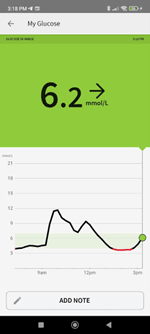
This is how high it went but I think is not too accurate. If my blood sugar was at 5.5 it should spike up to 7.8 near 8. Which is not too bad. Not taking the sauce may be important.
Unfortunately, I was not able to validate it again as I rushed to eat when my sensor was expiring and only saw it spike to 8.3 before the sensor stopped working.
Cake Made By Eleanor
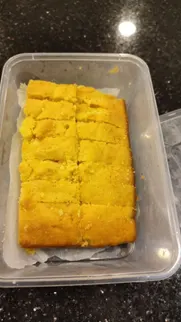

My colleague Eleanor occasionally bakes some cakes for us. I decided to try 2 pieces and it got to 7.5. A common theme seems to be that it’s ok to try one or two but don’t go crazy over it.
Fa Gao (Prosperity Cake)

These five bombs are made of flour and sugar. It is potent to eat 5.
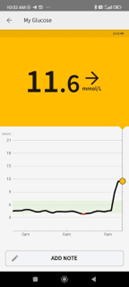
This is the highest it went.
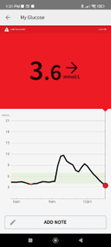
Spreading it out doesn’t help and just prolongs the spike. Eventually, it went from high blood sugar to low blood sugar.
Prata from the Supermarket
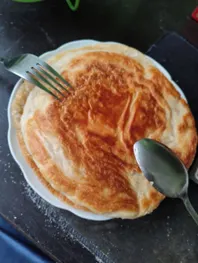
Decide to eat 2 pieces of Spring Home brand Prata. My colleague Tee Jin had the craziest reading with his coin Prata as he saw his blood sugar spike to 14.
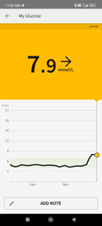
Eating two is not good but it’s not as bad as it seems.
Big Plate of Bee Hoon

This was my staple Saturday dinner.

Not good. Got to cut down.
CuraMaker’s Report Gives Us Some Handle on What To Eat
Here are some of the reports provided by CuraMaker.
Basically, they think that I have to gain like 5KG and this is how I should do it:
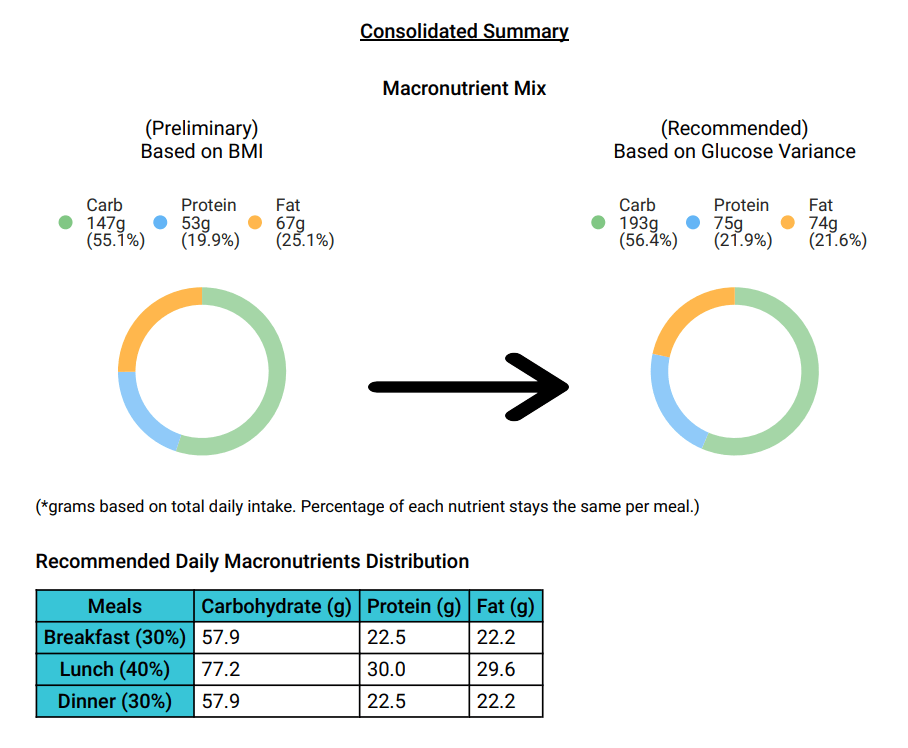
Here are the recommendations and comments about my personal situation:
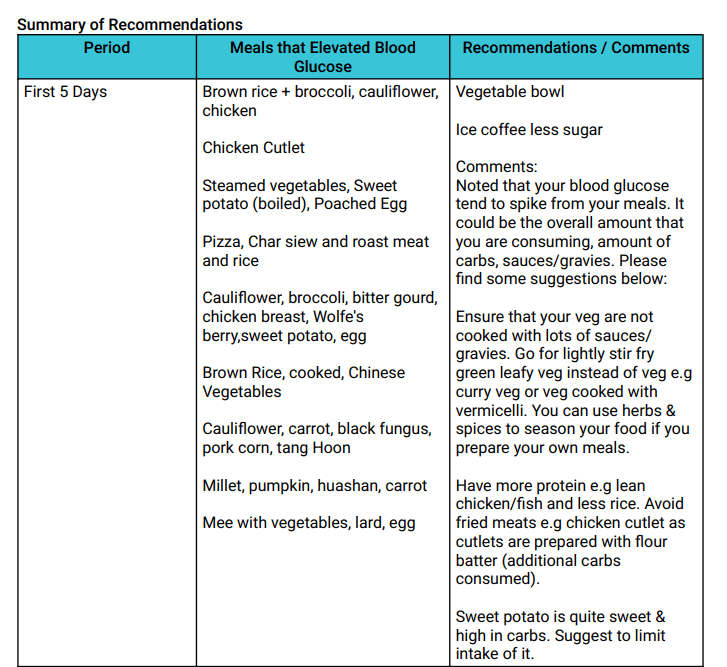
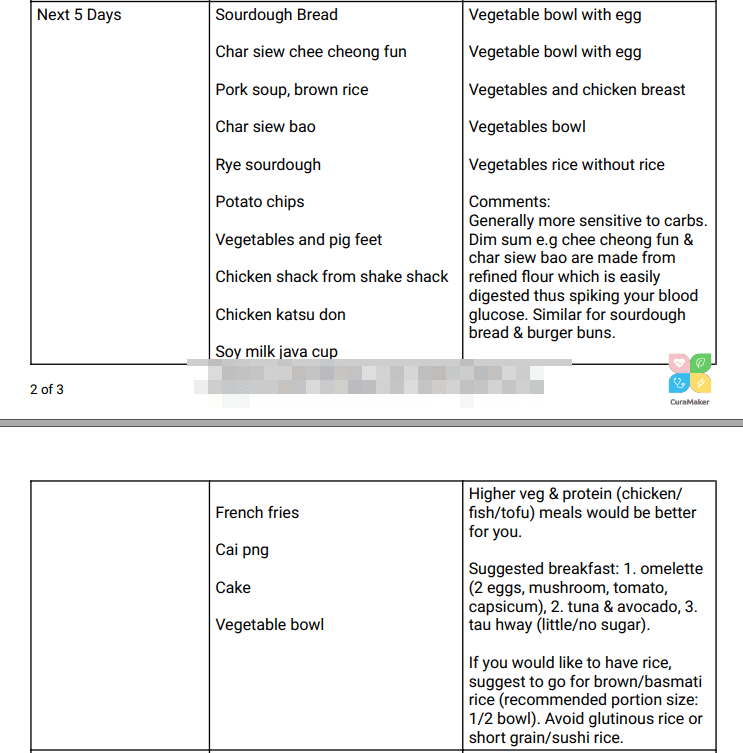
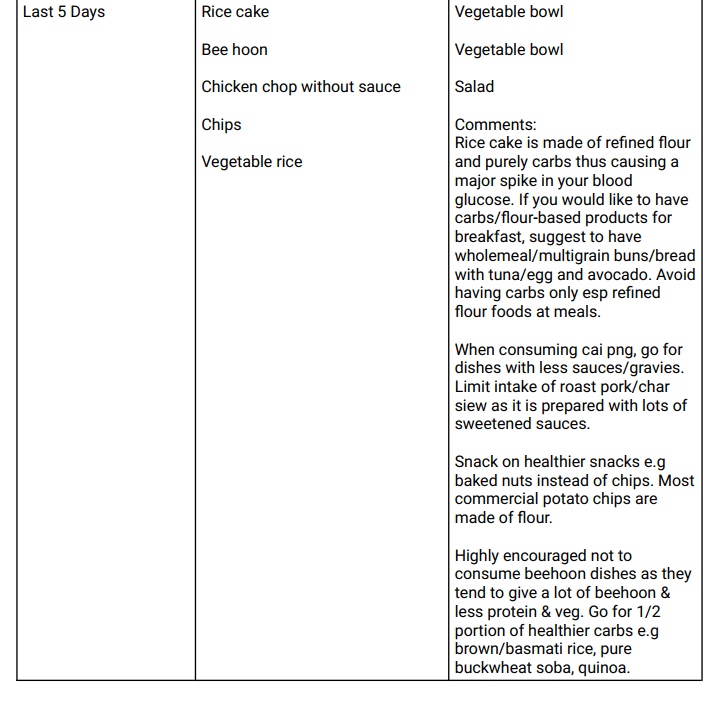
And this one… I think will fascinate the data nerds, but only if you understand what it means:

When we were reviewing these reports, it hit us squarely in the jaw that sometimes when we show less sophisticated finance people these kinds of stuff (dispersion, VAR), this is considered value and what our clients expect us to give them.
Now that we seat on the opposite side, we find these to be incredibly detailed, yet at the same time, it is not very useful unless someone coaches them to remember what these meant over the years.
This is something we should think about when we are crafting our reports or communication to clients.
Different Bodies Different Blood Glucose Tolerance Levels
Some of my colleagues felt that it is more interesting if we do it together. There is a lot of benefit in doing this because we really learn a few things together.
You realize that the younger folks’ bodies have much better control over their blood glucose levels in that you can throw a lot of things at their body and their graphs will still be within range. There are super bodies like my colleague Chin Yu whose spike is a move to just 8-9.
If we are determining this based on a range of participant results then mine will be at the lower bound, which is very concerning.
I wish that I can give you a range of food that will not spike your blood glucose but some of the responses I got is very WTF. Our brand lead said that what didn’t spike her blood sugar out of the band was white rice, chocolate milk and ice cream.
The three of us in the solutions team deduce that white rice and brown rice are very bad for our blood glucose levels. This shows you the contrast.
My colleague Mike game for an intense period on his mobile phone without food and it spiked and stayed above 7 for a period of time.
Most who drank wine and beer have no problems. The doctor explained that while alcohol is a toxin, it is also an organic solvent, hence it slices through cell membranes rapidly and is absorbed. Once inside the cell, the cell views it as a toxin, and hence metabolism of alcohol is a priority and carb, fat, and protein metabolism is put on hold. Hence there is a drop in blood sugar. Alcohol moderates blood sugar rise.
Many say Shake Shack does not spike blood glucose too much. Stay away from sweetened drinks.
Those fish soups can be really bad for blood glucose due to what they put in the soup. I tried a fish soup that taste very bland and it spike the blood glucose badly. This may be because of the pace that the sugar enters the bloodstream (soup goes down much faster)
The staff at CuraMaker also said that oil would suppress the spike in blood glucose. But generally mixing carbs with fat is a recipe for disaster. Dr Chong shared that generally eating Kway Teow and Tang Hoon is good but if you fry them, then they become very bad for the blood glucose.
It can be quite challenging to find food that does not spike the blood glucose level so much but here is a short list of what the more sensitive folks would tell me:
- Salad with vinegar, sesame oil dressing
- Cai png without rice (and choose those that are not sweetened)
- Overnight rolled oats for breakfast
- Pasta over other carbs (but not in crazy quantities)
- Replace rice with tang hoon
Conclusion
Going through this program fundamentally resets my view of my health status.
Shortly after this, we also had the opportunity to do an annual health screening. This health screening is a little different in that there is a doctor to explain whether we should do more tests, due specifically to our health condition. The doctor (Dr Tang) and I worked together and decided to do a Hemoglobin A1c (HbA1c) Test and assess whether we should do a full oral glucose tolerance test.
My test results came back and it is in the optimal range.
Nevertheless, the takeaway from the program is that in the spectrum of human beings, I am probably those in the lower bound who would have difficulties dealing with this stuff.
It is important to note that while this food does not spike blood glucose, the lifestyle might cause some other problems. There are those who have relatively normal glucose control but with cholesterol issues.
The challenge after this is to take incremental steps to improve.
I think if you are wondering whether it is a good idea to install a LibreLink patch to monitor your blood glucose over 14-days, I would highly recommend it. You spend like $92 one time in your life, to have a glimpse of your response to what you have been eating or what you don’t dare to eat because you think it is bad for you. Spend that relatively manageable amount of money and don’t have so many doubts anymore.
To some, this may be your Achilles heel. You might be good with wealth management but cannot confront your big fear. This is up to you but deep down, you may need to get off your high horse about why can’t some of your friends manage their personal wealth in a sensible manner because all of us are struggling with something.
For those of you who work for a company and would like to explore the costs and get the Curamaker team to your office, you can contact CuraMaker direct or I can link you up with what I can get from my colleague Tee Jin and Vivien.
I invested in a diversified portfolio of exchange-traded funds (ETF) and stocks listed in the US, Hong Kong and London.
My preferred broker to trade and custodize my investments is Interactive Brokers. Interactive Brokers allow you to trade in the US, UK, Europe, Singapore, Hong Kong and many other markets. Options as well. There are no minimum monthly charges, very low forex fees for currency exchange, very low commissions for various markets.
To find out more visit Interactive Brokers today.
Join the Investment Moats Telegram channel here. I will share the materials, research, investment data, deals that I come across that enable me to run Investment Moats.
Do Like Me on Facebook. I share some tidbits that are not on the blog post there often. You can also choose to subscribe to my content via the email below.
I break down my resources according to these topics:
- Building Your Wealth Foundation – If you know and apply these simple financial concepts, your long term wealth should be pretty well managed. Find out what they are
- Active Investing – For active stock investors. My deeper thoughts from my stock investing experience
- Learning about REITs – My Free “Course” on REIT Investing for Beginners and Seasoned Investors
- Dividend Stock Tracker – Track all the common 4-10% yielding dividend stocks in SG
- Free Stock Portfolio Tracking Google Sheets that many love
- Retirement Planning, Financial Independence and Spending down money – My deep dive into how much you need to achieve these, and the different ways you can be financially free
- Providend – Where I used to work doing research. Fee-Only Advisory. No Commissions. Financial Independence Advisers and Retirement Specialists. No charge for the first meeting to understand how it works
- Havend – Where I currently work. We wish to deliver commission-based insurance advice in a better way.
- My Dividend Experience Investing in UCITS iShares iBond Maturing in 2028. - April 23, 2024
- We Invest into Popular Funds When They Are Popular, Exactly When They Started Turning to Shxt. - April 22, 2024
- Meal Prep 2.0 – Cooking Your “Go-to” Meal that You Look Forward to Eating Everyday. - April 21, 2024



Leon
Friday 10th of June 2022
Thank you for sharing your interesting experience! I was on a 24/7 CGM too end last year and learn a ton from it. The device I use relies on BT and take a reading every 6 min. I noted you did not mention about exercise and it impact on BG. For my case, a walk after a meal helps a lot on manage BG. Also my BG climes in the early morning at about 4am; and I was not eating, not even in my dreams!
Leon
Wednesday 15th of June 2022
@Kyith, I won't describe it using "shot up" but it definitely climbs higher in the night despite me not eating anything after dinner.
Kyith
Saturday 11th of June 2022
You mean your BG shot up at 4am?
Pete
Friday 10th of June 2022
Thanks for sharing Kyith.
I went on the same experiment myself when they offer the sensor at huge discounts. I don't have a team to review what I ate but I get to see how what I ate affects my blood sugar. It is definitely a good way to find out about our bodies reaction to the food we ate.
Porridge, yellow noodle, pasta etc are really bad. There are also food that seems to "release" sugar slowly, such as basmati rice, that is why it took a long time for the sugar level to go down to the green zone.
I lost a few KG at the end of my monitoring period, it was because during the later part of wearing the sensor, I became obsessed with keeping the curve low and flat!
Kyith
Saturday 11th of June 2022
wah haha! Thanks for sharing Pete! Really different people react differently. I will be careful of pasta now!